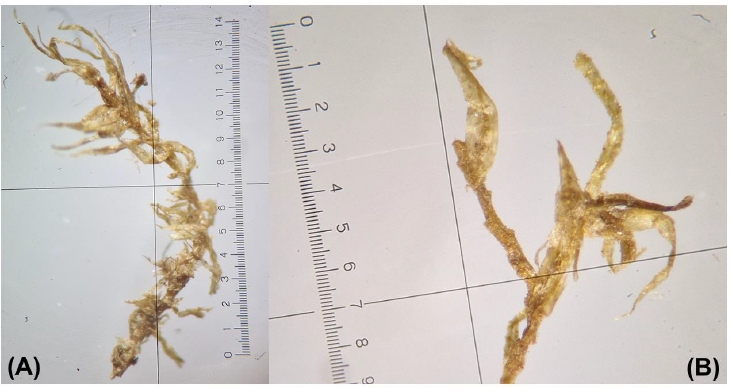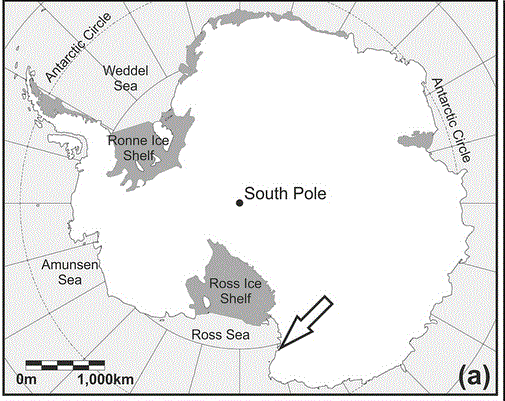
Pohlia nutans moss. Photo by Hermann Schachner
By Jo Nova
Around 1,000AD, a little delicate moss (just like the one above), lived in a spot in Antarctica which is now locked in snow and ice all year round, and considered hyper arid and perennially frozen. No one expected to find nodding thread-moss (Pohlia Nutans) on Boulder Clay Glacier.
Researchers had to drill through 11 meters of ice to find it (or what’s left of it) and managed to date it to 1,050 years before present. This puts it smack in the centre of the Medieval Warm Period, when Vikings were marauding England, showing that this part of Antarctica was warmer 1000 years ago than it is today, even though humans have poured forth 1.8 trillion tons of greenhouse gases.
At the same time as the mosses grew, there was a veritable population boom of penguins and elephant seals in the Ross Sea next door, right up until the brutal cold of the Little Ice Age wiped them out.
Pohlia nutans, needs liquid water and warmer summers. In order to grow, it has to find land that is ice free in summer has rain or melted water. Mosses can’t survive in this area now.
Thanks to Kenneth Richards at NoTricksZone for finding the study.
Spare a thought for the life of an Antarctic moss. They spend 9 or 10 months of the year buried in snow, hoping for a five or six weeks of warmth so they can grow a few millimeters. If they’re lucky they might catch some floating penguin poo dust for nutrients. If they’re not lucky the summers get cold for thousand years, and they’re buried in 11 meters of snow.
Apparently, some mosses have survived 5,000 years stuck under a glacier, and can still spring back to life, not just from spores but from dormant tissue itself.
It sort of suggests this sort of climatic mayhem has happened before?
Fully 120 proxies show the Medieval Warm Period was a global phenomenon. Yet the climate industry depends on it not being true. Everything that shows the world was warmer shows that our coal plants and cars are irrelevant. That nature does it all by herself, and that thousands of IPCC experts have been selectively skewing their stories to get bigger grants, or are just too scared to say what they really thought lest they be called a “climate denier”.
That, and the media ignoring hundreds of stories like these.

Fig. S6. Details of the two moss species embedded in the ice core: A) Bryum pseudotriquetrum (13 mm long); B) Pohlia nutans (10 mm long). Note: the scale is in cm, but the pictures are enlarged respectively 5.4 and 7.8 times.
For more information:
- Medieval Warm Period found in 120 proxies. Plus Roman era was similar to early 20th Century.
- Climate helped drive Vikings from Greenland
- The Medieval Warm Period hit west Antarctica
- Antarctica was warmer one thousand years ago — and life was OK
REFERENCE
Forte, E., Azzaro, M., Cannone, N. et al. A warming pulse in the Antarctic continent changed the landscape during the Middle Ages. Commun Earth Environ 6, 281 (2025). https://doi.org/10.1038/s43247-025-02259-4












Some religions only recognize existence of history back to a certain date.
Climate Change is one of them.
40
Some say 1750, others say 1950….
Either way CO2 warm forcing is negligible at the 430-ppm level.
30
Hmm – negligible warming – but the Marvellous Mr. Miliband is doing REAL damage to the UK economy.
Auto
30
As I keep saying, the anti-science religion/ideology of the Left subscribes to an Aristotlean world view in which the world is static and never changing. Any slight deviation from what they imagine is this stable, static environment of earth is treated with panic and alarm. It’s sad that so many of those of the Left, political “leaders” , senior public serpents and even “university” “academics” and CSIRO “scientists” believe this.
00
Civilisations have thrived during the naturally warm periods of the Minoan, Egyptian, Roman and Medieval eras. (That’s one of the reasons that the Left have destroyed the education system and this sort of thing is no longer taught.)
Plus, we are coming to the very end of a rare interglacial. As the world cools, it will be impossible for civilisation to survive without coal, gas and nuclear power stations (and real hydro where possible, not SH2).
The idea that the earth and universe is static is a very primitive one and articulated by Aristotle in “In the Heavens” 350BCE.
It is only in the last 100 years or so that the ideas of Alfred Wegener (1880-1930), a real climatologist, geologist, geophysicist, meteorologist and polar researcher came to be accepted that the earth is not static. Among other ideas he conceived of continental drift which led to plate tectonics.
However, as early as 1840 Louis Agassiz (1807-1873) hypothesised that much of North America was once buried under glacial ice up to 3km deep and that climate must change.
Milutin Milanković (1879-1958) also discovered natural cycles in the climate.
Warmists have to do a lot of catching up with modern thinking.
“It is difficult to get a man to understand something, when his salary depends on his not understanding it.
Upton Sinclair, 1934”.
10
It’s a well known geological fact that oceans have fallen by at least 4.2 metres over the last seven thousand years.
While that fall has been irregular; perhaps giving the Noah’s Ark event, the constant downward trend is undeniable.
The most recent two thousand years has seen a fall of 1.2 metres.
The ocean fall has a corollary: ice accumulation at the poles.
10
Warmist “researchers” love going to exotic adventure holiday locations for their “research” and plenty have gone to Antarctica (and remote tropical islands).
I wonder why so many missed this?
What do they do there?
00
Moss as mentioned above is a plant but lichens are not plants but plant-like composite organisms of a combination of fungus and algae and others.
There has always been lichens in Antarctica even outside of the Medieval Warm Period responsible for the moss mentioned above.
I recall studying atlases as a child and remember how the tip of the Antarctic Peninsular sometimes was coloured with a slight greenish tinge which the legend coded as indicative of the presence of lichens.
Even the fully woke Australian Government website for the Antarctic Program admits this, and no mention of it being due to “climate change”.
00